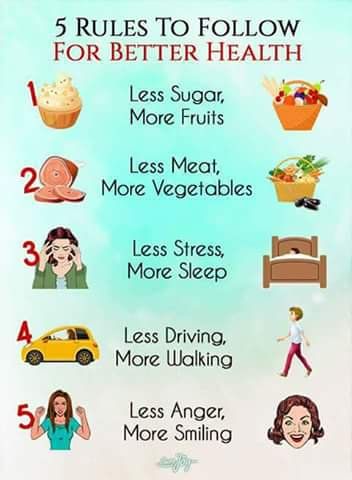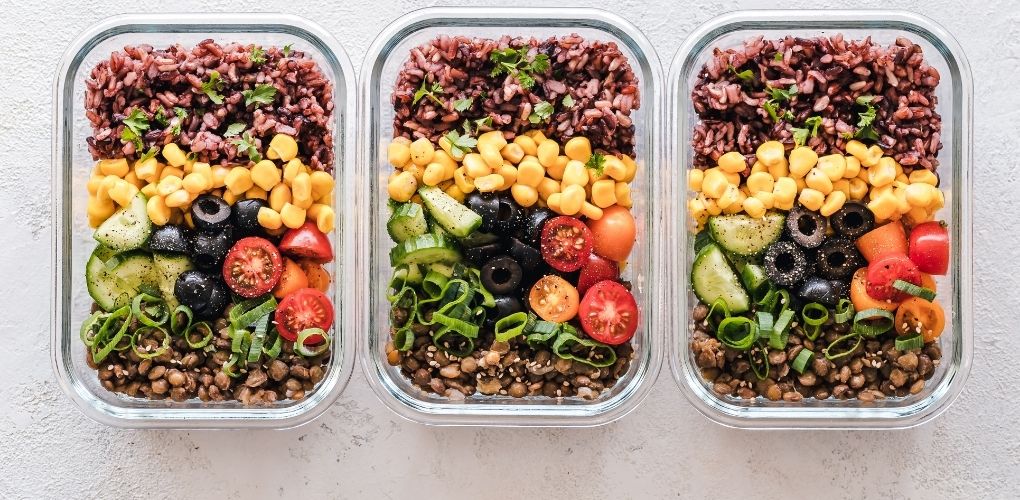
Comprehensive school health programs are not a one-size fits all model. It must be developed and implemented locally, with a commitment of resources. Collaboration among school stakeholders is key to the WSCC Model, which includes parents, students, health professionals, and parents. A strong school health program is only possible if there is a healthy learning environment. You must also ensure that it is safe and promotes mental and physical well-being. The WSCC Model emphasizes prevention, early diagnosis of illnesses and injuries, and assessment of effectiveness.
The WSCC Model is the most commonly used model for school-health and it is a good match for a range of reasons. The WSCC emphasizes the importance and centrality of student needs. It also highlights the role of the community in supporting schools. It stresses the relationship between health and academic achievement and the use of evidence-based school policies to promote health. SHI of the AFHK includes questions that cross-cut to address policies and practices that support multiple topics in health.

While schools can't solve the nation’s most pressing health issues, they can help coordinate the efforts in many different sectors to promote youth health and wellbeing. Parents, health care professionals, youth organizations, and media must be involved in these efforts. Although there is a list that has been approved for school health programs, the public lacks awareness. A school-based health program should have the goal to improve the lives and communities of young people by reducing their health and education costs.
The SHI guide provides detailed information about school health, identifies strengths/weaknesses, and sets goals and areas of improvement. The SHI guide summarizes all of the responses from respondents and provides suggestions for improvement. With a comprehensive SHI, schools can be more effective at creating an inclusive and healthy environment for students and staff. This guide will help schools create a culture of healthy living and encourage better health outcomes for all.
Comprehensive school health programs focus on student health and well-being. It focuses specifically on six behaviors that are important for young people's health and well being. In addition to physical and mental health, the program should address nutrition and foodservice, which accounts for two-thirds of all deaths and morbidities among young people. In addition to offering these services, the model must include family involvement. As a result, parents and staff should be involved in every aspect of the school health care.

The WSCC Model encourages schools to provide preventive services. The WSCC Model includes services that are not offered in most other settings. These services cover a wide variety of health topics and stress the importance that the family plays in the children's growth. The WSCC model promotes health for all children. This program can help improve the quality of life in communities. These activities have a positive affect on the mental well-being and health of children.
FAQ
What is a good schedule for a 7-day work out?
A seven-day program should include three days of cardio training (running, biking and swimming), two strength exercise (using free weights or weight machines) and one flexibility/core work out (yoga, Pilates). It's essential to do each activity at least once a week. Maximum 45 minutes should be allotted for each session.
Cardiovascular Exercise: Running/Biking/Swimming
You should aim to get at least 60 mins of cardio exercise per week. For best results, aim for 75 minutes per week. Cardio exercises can help improve blood flow and stimulate muscle growth.
Strength Training
Cardio exercises target the heart, lungs and muscles. Strength training targets the muscles, tendons and bones. Strength training is a great way to build lean muscle mass that helps you burn calories even if you are not actively exercising.
Flexibility and core workouts
To strengthen your whole body, flexibility and core work outs are excellent ways to do so. Both yoga as well as Pilates are great choices.
How does weightlifting help you lose fat more quickly?
You can lose more fat by weight lifting, but only when you do it in conjunction with cardio.
It is important to do weightlifting right after cardio exercise in order to reap the full benefits.
Weightlifting is a good way to lose weight. It increases your heart beat and oxygen consumption.
It is important to combine cardio with it, as you will not see significant changes in your body's composition.
Cardio Exercise: Good or Bad for Your Health?
Cardiovascular exercise can have many benefits. It improves blood flow, strengthens your heart muscle and increases stamina.
Cardiovascular exercise includes running, biking, hiking, swimming, tennis, basketball, soccer, volleyball, football, etc.
Cardio exercises should be avoided at high intensity levels. This could cause injury.
The cardiovascular exercise should only be performed if you feel good.
Do not push yourself to the limit. This could lead to injury.
Begin by warming up before engaging in cardio exercise. Start slowly increasing your intensity.
Be aware of your body and listen to it. If you feel pain when doing cardiovascular exercise, you should immediately stop.
It is also advisable to rest after a cardiovascular workout. This will allow your muscles to rest.
Cardiovascular exercise is a great way to lose weight.
It is the best method to lose calories and reduce belly weight.
Which workout is the most effective for men
It depends on what you're looking for. Cardio exercises are great for anyone looking to lose weight.
If you want to just build muscle mass, strength training is better as it increases lean body weight.
Both types have been proven to have benefits for your overall well-being.
I recommend HIIT (or sprint interval training) if you want to be fit quickly. This type is great for burning fat fast by increasing metabolism. It will also help you stay motivated to train even when your body is tired.
How To Build Muscles Fast?
Eating healthy foods and lifting weights regularly is the best way to build muscle fast.
It is best to exercise in the morning, when you feel fresh and ready to go!
Try exercises like squats and bench presses.
Use different weight training techniques and drink plenty water throughout the day.
Statistics
- Cardmembers earn 5% Back at Amazon.com with a Prime Credit Card. (amazon.com)
- According to the American Heart Association, blood pressure should be checked at least once every two years, beginning at age 20. (my.clevelandclinic.org)
- The PRS enabled risk stratification for overall prostate cancer and lethal disease with a four-fold difference between men in the highest and lowest quartiles (HR, 4.32; 95% confidence interval [CI], 3.16-5.89). (pubmed.ncbi.nlm.nih.gov)
- 10 pounds in a month is likely during a lean bulking phase, especially for beginners. (muscleandstrength.com)
- By John Thompson Take a whopping 38% off a set of PowerBlock Pros. (menshealth.com)
External Links
How To
How do I lose fat by exercising?
Exercise can help you burn calories and increase your metabolism.
At moderate intensity, you will lose weight easily.
These are the top tips for burning fat while you exercise.
-
Do cardio exercises such as walking, swimming, jogging, cycling, running, or elliptical training.
-
For 30 minutes, do it three times a week.
-
If you want to lose more weight, add strength training to your routine.
-
Avoid intense workouts. It is possible to build muscle without destroying muscle tissue.
-
During exercise, drink plenty of water. Water flushes out toxins, and keeps your body properly hydrated.
-
After exercising, consume low-fat protein smoothies. Protein shakes boost energy and repair muscle tissue.
-
You can eat smaller meals throughout the day so that you don't feel hungry in between meals.
-
Don't skip breakfast! Skipping breakfast can lead to fatigue and sluggishness.
-
Take care of yourself mentally. Stressful situations can affect your metabolism.
-
Keep a positive attitude. Studies show that people who believe they're overweight gain more weight than those who think they look pleasing.
-
Get enough rest. Lack of sleep makes it harder to burn fat.
-
Stay active. Keep moving every hour.
-
Maintain a healthy diet. A healthy diet will help you feel fuller for longer.
-
Find relaxation techniques. Your body won't release stress hormones that cause muscle tissue destruction if you have a tense mind.
A balanced diet will provide all nutrients that are necessary for growth.
Instead of eating three large meals a day, eat six smaller meals every day. This gives your body the time it needs to process what you've eat.
You need about 500 milligrams of calcium daily to maintain strong bones. Calcium can be found in dairy products such as yogurt, fortified soybean beverages, orange juice, cereals, bread, and cereals.
Calcium can be found in leafy green veggies, beans, tofu and nuts as well as seeds, nuts and cheese.
Vitamin D is necessary for the body to absorb calcium. Vitamin D can be found in egg yolk, fatty fish, and other fortified foods.
Vitamin E is crucial for skin health. It's found in vegetable oils, wheat germ oil, peanuts, almonds, sunflower seeds, and corn.
Your body requires zinc to function normally and for wound healing. Zinc is found in seafood, oysters legumes meats, whole grains, whole grains and meats.
Zinc deficiency may cause fatigue, loss appetite, depression, and impaired immunity.
Sugar intake can lead to insulin resistance which causes blood glucose levels to rise. Insulin resistance leads directly to weight gain.
When there is a high level of free radicals, insulin resistance can develop. Free radicals can be molecules with unpaired electrons that cause damage to cell membranes.
The most common sources of free radicals include food additives.
Free radical damage can lead cancer, heart disease or diabetes, arthritis, asthma, or other forms of aging.
A well-balanced diet rich in antioxidants is the best way for you to avoid free radical damage. Antioxidants protect against oxidative damage.
Vitamin C, beta carotene (found within citrus fruits, carrots, sweet potatoes and spinach), Vitamin E (found inside nuts, olive oils, avocados and eggs), and Vitamin C (found among mangoes.
Additional antioxidant nutrients include selenium and copper, manganese and zinc.
Selenium helps protect cells from oxidative damage caused by free radicals. Selenium may be found in Brazil nuts as well tuna, liver and kidneys. It can also be found on shrimp, cod, turkey, beef lamb, pork, chicken, and other foods.
Copper protects eyes, brain, lungs and red cells. Copper is also found in poultry, meat, and organs.
Manganese is essential for bone structure. Manganese can be found in brown rice and spinach as well as bananas, prunes raisins, oatmeal, lentils, and oatmeal.
Zinc is essential for normal growth, reproduction, wound healing, and average growth. Zn can be found in lean cuts, white fish, poultry, eggs, and other foods.